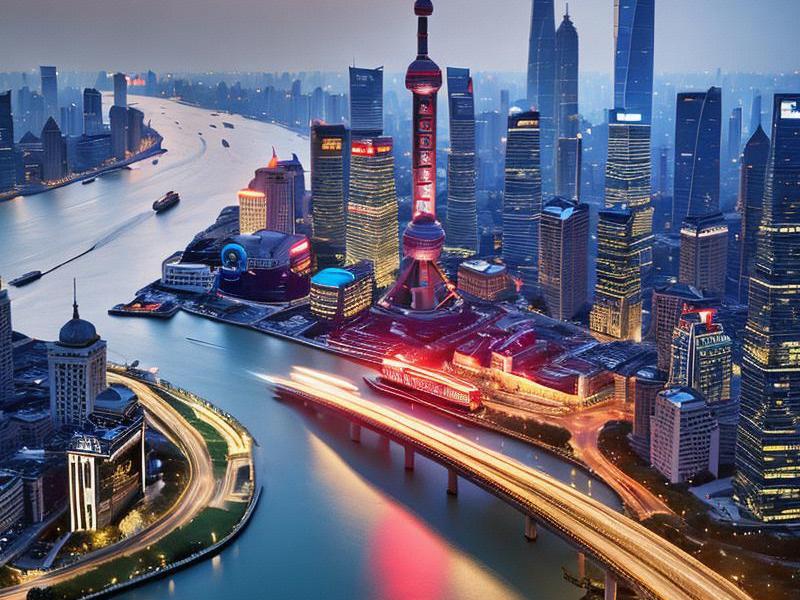Shanghai's Renaissance: A Journey Through the City's Cultural and Economic Transformation
⏱ 2025-05-01 18:58 🔖 上海龙凤419
📢0℃

Shanghai, a city that has long been a symbol of China's economic prowess, is now also making its mark on the global cultural map. Over the past few decades, Shanghai has undergone a remarkable transformation, blending its rich historical heritage with cutting-edge modernity. This renaissance is not just about skyscrapers and shopping malls; it's a story of cultural revival, economic innovation, and urban renewal that has put Shanghai at the forefront of global urban development.
The city's cultural transformation is perhaps the most visible aspect of its renaissance. Once known primarily as a commercial hub, Shanghai is now a vibrant center for arts, music, film, and design. The Bund, once a symbol of colonialism, has been revitalized with stunning architecture that blends the old and the new. The iconic Oriental Pearl Tower, with its futuristic design, stands as a testament to Shanghai's ambition to become a global cultural capital.
Cultural institutions such as the Shanghai Museum, the Shanghai Grand Theatre, and the Power Station of Art have played a pivotal role in this transformation. The Shanghai Museum, renowned for its extensive collection of Chinese art, attracts millions of visitors each year. The Shanghai Grand Theatre, home to world-class performances, has become a venue for international cultural exchanges. The Power Station of Art, a former power plant turned contemporary art museum, showcases the works of both established and emerging artists, reflecting the city's commitment to fostering creativity and innovation.
The city's economic evolution is equally impressive. Shanghai was one of the first cities in China to open up to foreign investment, and it has since become a global financial center. The Shanghai Stock Exchange is one of the largest in the world, and the city is home to numerous multinational corporations and financial institutions. The Pudong area, once a rural landscape, has been transformed into a bustling financial district, with landmarks like the Jin Mao Tower and the Shanghai Tower, the tallest building in China.
上海夜网论坛
Shanghai's economic transformation is not limited to finance. The city has also become a hub for technology and innovation. The Zhangjiang Hi-Tech Park is home to numerous high-tech companies, research institutions, and startups. Shanghai's commitment to innovation is evident in its efforts to develop smart cities, with initiatives like the Shanghai Urban Planning Exhibition Center showcasing the city's vision for sustainable urban development.
Urban renewal has been a key component of Shanghai's renaissance. The city has invested heavily in infrastructure projects, including metro lines, highways, and public transportation systems, making it one of the most connected cities in the world. The Maglev train, which connects Pudong International Airport to the city center, is a marvel of modern engineering and a symbol of Shanghai's commitment to innovation.
The city's efforts to preserve its historical heritage while embracing modernity have been particularly noteworthy. The Yu Garden, a classical Chinese garden built in the 16th century, stands as a testament to Shanghai's rich history. The nearby Yuyuan Bazaar, with its traditional architecture and bustling markets, offers a glimpse into the city's past. These historic sites coexist with modern landmarks like the Bund and the Oriental Pearl Tower, creating a unique urban landscape that is both dynamic and harmonious.
爱上海419论坛
Shanghai's renaissance has also had a profound impact on its residents. The city's quality of life has improved significantly, with investments in education, healthcare, and public services. The city's universities and research institutions attract top talent from around the world, contributing to its reputation as a global knowledge hub. The availability of world-class healthcare facilities ensures that residents have access to the best medical care.
The city's cultural and economic transformation has also had a global impact. Shanghai has become a destination for international tourists, with attractions like the Bund, the Oriental Pearl Tower, and the Yu Garden drawing millions of visitors each year. The city's international film festivals, art exhibitions, and music concerts showcase its cultural vibrancy and attract global attention.
Shanghai's renaissance is not without challenges. The rapid urbanization has led to issues such as traffic congestion, air pollution, and housing shortages. The city has implemented various measures to address these challenges, including the development of green spaces, the promotion of public transportation, and the implementation of strict environmental regulations.
上海花千坊龙凤
The future of Shanghai looks promising, with continued investment in innovation, sustainability, and cultural development. The city's vision for the future includes initiatives like the construction of the Hongqiao International Airport, which will further enhance its connectivity and global influence. The development of the Shanghai Free-Trade Zone aims to position the city as a leader in international trade and finance.
Shanghai's renaissance is a story of resilience, innovation, and ambition. It is a city that has successfully balanced its rich historical heritage with cutting-edge modernity, becoming a global hub for culture, commerce, and innovation. As Shanghai continues on its journey of transformation, it serves as a model for other cities around the world, demonstrating the possibilities of urban renewal and cultural revival.
In conclusion, Shanghai's renaissance is a testament to the city's ability to adapt and thrive in a rapidly changing world. Its cultural transformation, economic evolution, and urban renewal have put it at the forefront of global urban development. As Shanghai continues to grow and evolve, it will undoubtedly remain a beacon of innovation and a symbol of China's aspirations on the global stage.
【潮涌长三角:上海的半径与圆周】从外滩灯光到江南水乡的共生密码Shanghai's Vibrant Cultural Scene: A Blend of Tradition and Modernity【霓虹与素笺】上海女性的百年气质图谱Shanghai 5250: Quantum Leisure Singularity and the Galactic Nightlife Matrix【城市观察】文化魔方的三原色:上海剧场、书店与美术馆的共生实验Shanghai's Nightlife Renaissance: Where Imperial Heritage Meets Quantum Innovation【霓虹密码】上海娱乐会所的时空折叠术Shanghai's Smart Nightlife Ecosystems: Blending Imperial Heritage with AI-Driven Innovation【量子上海】在11个维度中同时绽放的魔都镜像(1850-2025)Shanghai's Finest Women: A Story of Resilience and Excellence

